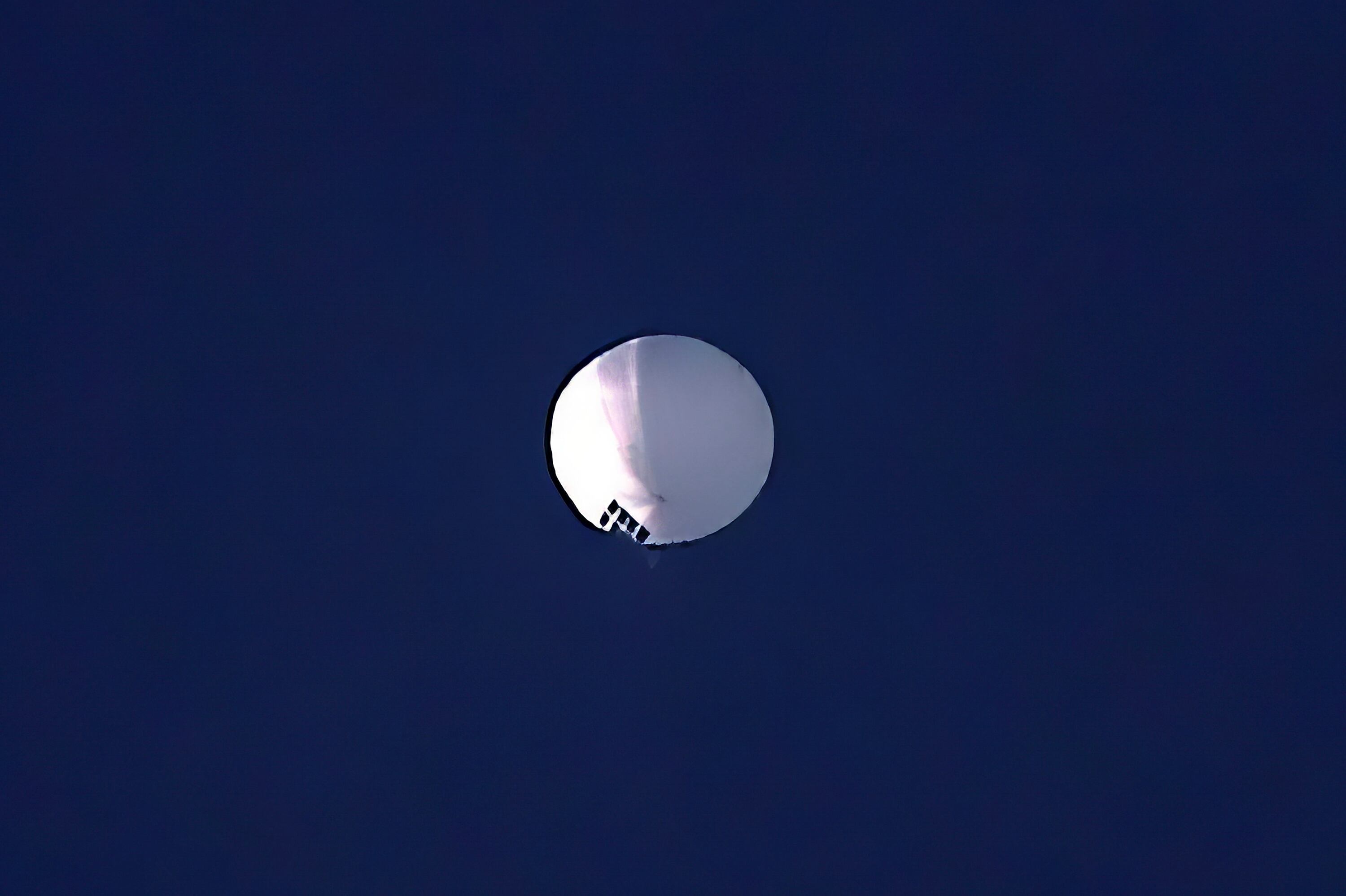WASHINGTON — When the Pentagon revealed last week that a high-flying, Chinese balloon was spotted over the United States, officials said they didn’t expect the airship would add much value to the intelligence China is already gathering through its network of spy satellites.
“Our best assessment at the moment is that whatever the surveillance payload is on this balloon, it does not create significant value added over and above what the [People’s Republic of China] is likely able to collect through things like satellites in low Earth orbit,” a senior defense official told reporters Feb. 2.
While it’s unclear what information the uncrewed airship gathered before the Pentagon shot it down Feb. 4, experts say balloons loitering at high altitudes can offer some advantages over satellites and drones — or could at least augment their intelligence, surveillance and reconnaissance capabilities.
Tom Karako, director of the Missile Defense Project at the Center for Strategic and International Studies think tank, said one benefit of these balloons is their ability to hover closer to the ground than satellites, and they may be able to intercept communication or electronic signals that orbiting systems can’t.
“It could be thermal infrared, it could be signals intelligence. One of the reasons there are advantages to the suborbital position is you might not be able to do all of that from space,” he told C4ISRNET in a Feb. 3 interview. “There’s a whole lot of value to something other than space.”
Bryan Clark, director of the Hudson Institute’s Center for Defense Concepts and Technology, said balloons also offer more persistent, less predictable coverage over an area of interest. While satellites follow a known orbit, airships use wind currents and automated controls to maneuver in different directions. They can also hover in one place for a long period of time.
A senior defense official said during a Feb. 2 briefing that when the Chinese balloon was detected near Malmstrom Air Force Base in Montana, which hosts a strategic intercontinental ballistic missile wing, the Pentagon “acted immediately to protect against the collection of secretive information.” That could mean anything from shutting off signals-emitting systems to moving secretive aircraft under a hangar.
While the Pentagon can take similar steps to stop satellites from gathering intelligence, Clark said it can be more disruptive to have an airship looming overhead for long periods of time.
“With a satellite, you know when they’re going to go overhead, so you stop doing whatever you’re doing for the time it’s overhead,” he told C4ISRNET. “If you have a balloon, it could be out there for days or months, and you’re sort of left either having to stop whatever you’re doing that’s generating intel — or you live with it.”
Clark, who co-authored an April 2022 report that considered how the U.S. Navy could use balloons for ISR missions, said the events of the last week highlight the disruption stratospheric balloons can cause to an adversary. The Defense Department ultimately chose to shoot down the balloon Feb. 4 with a missile fired from an F-22 jet, but concerns about the potential for civilian casualties delayed the decision for several days.
He predicted it could open a larger discussion about the utility balloons may have for military operations, and whether the U.S. should invest more in the technology.
“I think this event is going to raise awareness of this technology,” he said. “The difficultly the U.S. is having with regard to dealing with it is a great lesson for how we can use it, perhaps against China.”
The Pentagon has a history of using balloons for military operations. In the early 2000s, the department flew large tethered aerostats equipped with intelligence payloads over Iraq and Afghanistan.
The U.S. Army also spent nearly $2.7 billion to develop the Joint Land Attack Cruise Missile Defense Elevated Netted Sensor System, or JLENS, which featured 70,000-pound tethered balloons used to warn against a missile attack. The program was canceled in 2017 after one of the aerostats broke free and floated from Maryland into Pennsylvania, causing power outages before it was downed in a field.
Politico reported last year that the Defense Department’s fiscal 2023 budget shows an uptick in funding for balloon projects, increasing from a combined $3.8 million in fiscal 2021 and fiscal 2022 to about $27 million. That doesn’t include funding for classified efforts like the Covert Long-Dwell Stratospheric Architecture program, which was reportedly created to identify drug trafficking activity.
Byron Callan, a defense and aerospace policy research expert at Capital Alpha Partners, told C4ISRNET that China’s use of the technology will likely “grab some attention” in Congress and the DoD, but it’s unclear whether that will lead to more funding for stratospheric balloon development.
He noted that the event offers a tangible example of possible hostility from the DoD’s top adversary just as House lawmakers are scheduled to discuss defense threats at hearings this week. On Feb. 7, the House Armed Services Committee will hold a hearing on “the pressing threat of the Chinese Communist Party to U.S. national defense.” And on Feb. 9, the committee’s cyber, IT and innovation panel is to hold a hearing on “the future of war.”
Callan said heightened concerns about Chinese aggression could carry into budget debates this spring and make it harder for Republican lawmakers to argue for reducing the defense expenditure.
“It can change the tone of the debate over spending in the United States,” he said. “It’s just kind of going to make it, to me, less palatable for the GOP to push for any kind of cut in defense spending.”
Courtney Albon is C4ISRNET’s space and emerging technology reporter. She has covered the U.S. military since 2012, with a focus on the Air Force and Space Force. She has reported on some of the Defense Department’s most significant acquisition, budget and policy challenges.





